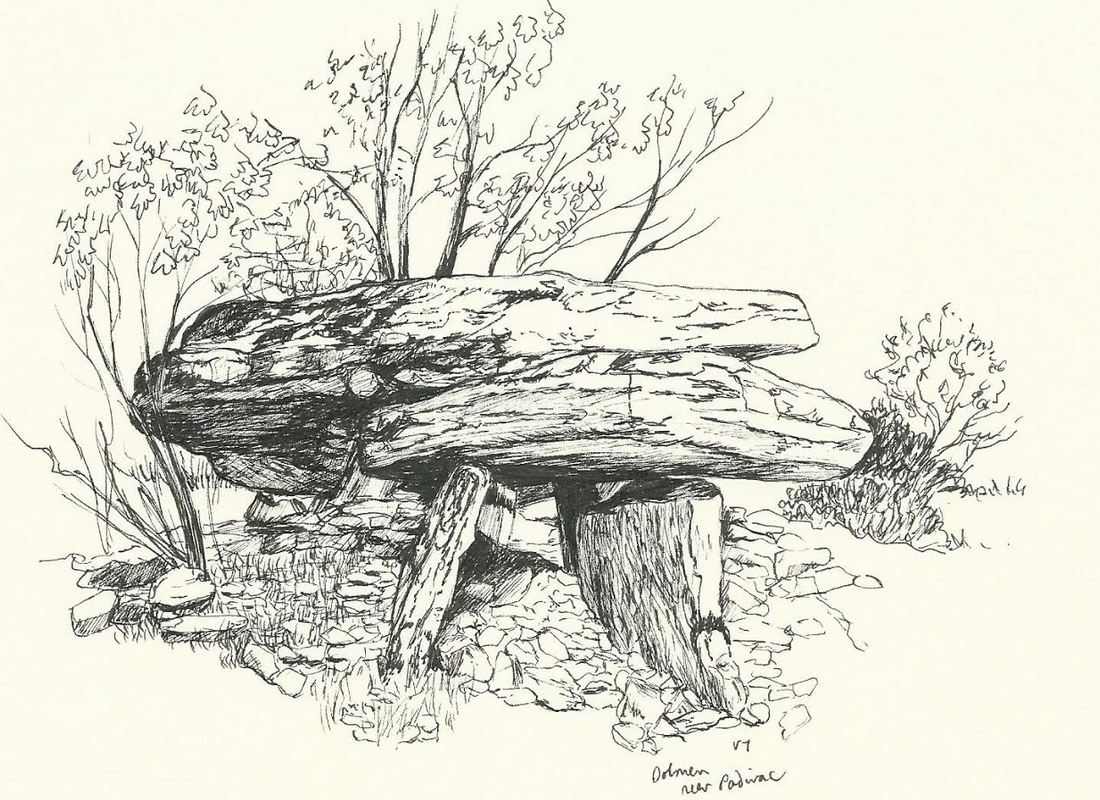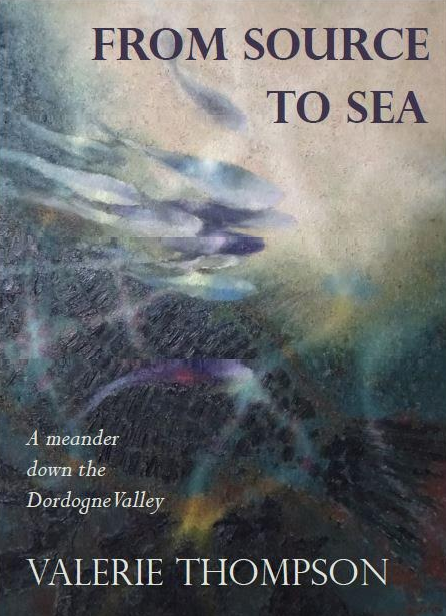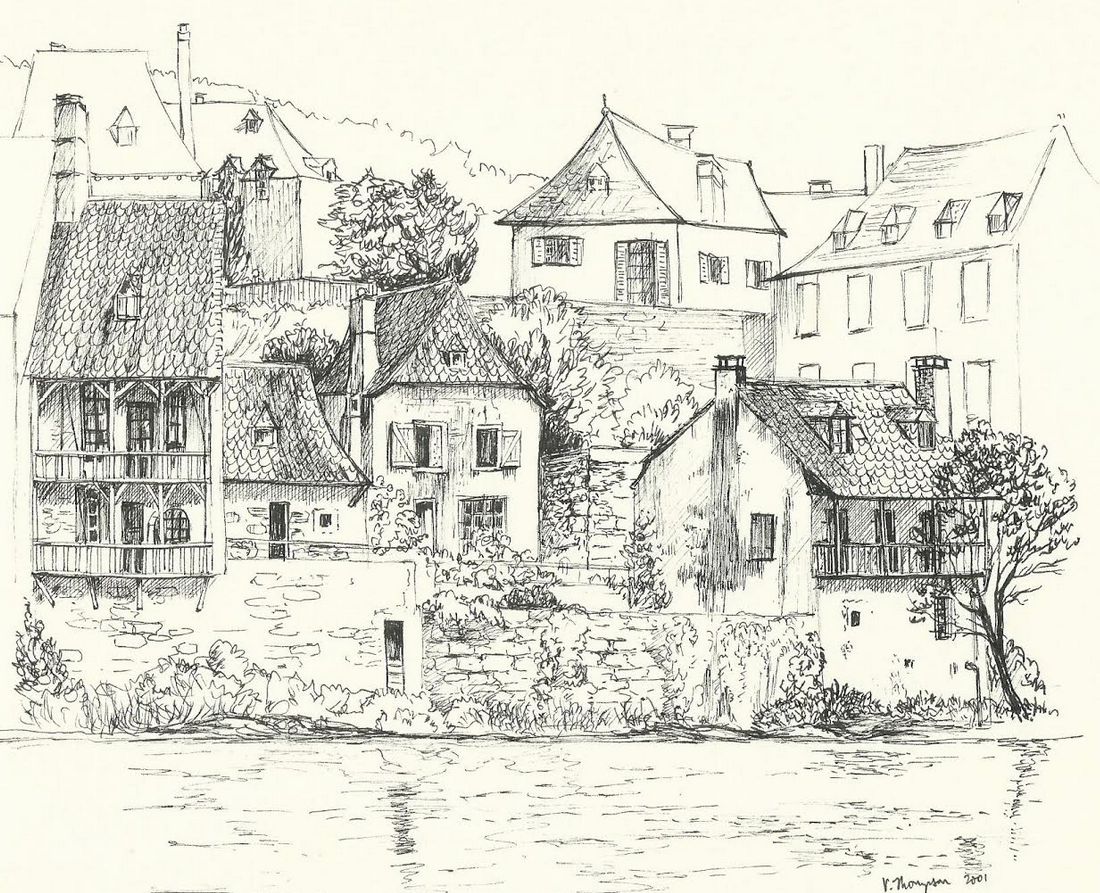 Abraham Lincoln
If given the truth, the people can be depended upon to meet any national crisis...
Abraham Lincoln
If given the truth, the people can be depended upon to meet any national crisis...
 Guildford news...
for Guildford people, brought to you by Guildford reporters - Guildford's own news service
Guildford news...
for Guildford people, brought to you by Guildford reporters - Guildford's own news service
Feature: From Source to Sea, a Meander Down the Dordogne Valley
Published on: 24 Sep, 2018
Updated on: 28 Sep, 2018
About 30 years ago I bought a small, old, stone house in a rural village in the Correze, a backwater of France, about halfway down the Dordogne River. Essential restoration and improvements made the cottage a true ‘home from home’.
Some years later I wrote and illustrated a book about the purchase, the journey, the crazy things that rental guests did and about various aspects of the country which fascinated me, including wildflowers, fungi, standing stones and the mysteries of Chartres Cathedral. This was published by Leonie Press with the title “The Hidden Triangle”- the description that writer Freda White gave to this remote area in “Three Rivers of France”, which inspired me to search this region for a holiday house.
I became fascinated by the whole story of the river and its communities and for five years a friend and I drove the length of the Dordogne in fits and starts, taking notes and photographs with the idea of writing a second book.
 This has now been published by Lulu.com, both as an e-book and as a paper-back (soon to be available from Amazon and other book distributors). Again, I have illustrated it with line drawings and included hand-drawn maps.
This has now been published by Lulu.com, both as an e-book and as a paper-back (soon to be available from Amazon and other book distributors). Again, I have illustrated it with line drawings and included hand-drawn maps.
I wrote about geology, geography, pre-history, the Romans, the Cathars, the Templars, the Hundred Years War, the landscape, legends, religious institutions, castles, churches, towns, villages, industry, what is on, in and over the river and who has lived in the vicinity. The lovely cover uses a painting called “Fish and Fossil,” appropriate references for a book about the Dordogne, by Glyn Morgan, an artist with whom I worked.
One highlight of our researches was the exploration of the history of Brivezac, the tiny village where I own my house. To discover that its abbey was of greater importance in the past than nearby Beaulieu, with its large and solid Abbatiale was a revelation. Now there is just a small church with some of its robbed-out stones scattered in the walls of the village barns. But its splendid reliquaries are now in pride of place in the Musée de Moyen Age in Paris.
Another special place was an apparently unimportant village called Mezels, where lepers were allowed to shelter during a time of persecution, and then, when following up the derivation of the name I discovered links with the word ‘mazar’ – a begging-bowl.
Then there was the extraordinary pre-historic site at Sigoniac, discovered by accident by its owner, where he found three, hidden, round chambers behind the crumbling mud and stone platform on which his house stood, one with a weird acoustic, another with a still pool of water in the floor, over which celebrants, of whatever cult ceremonies took place there, would have had to step.
Writing is not the only creative activity I have pursued. At nine, I wanted to be an opera singer, not having ever attended an opera, and was desperate to start piano lessons. At junior school, I learnt a great deal about music and could sing from a score without thinking about it.
Finally, at eleven, I was allowed to start piano and achieved grade 4 after two years – grade 8 in six. Before college, I studied with a concert pianist. By thirteen I was already composing. Subsequently, I have written a mass and a requiem, part of which was performed by The London Chorus, as well as numerous songs and an Ave Verum, sung at a Sunday service at Westminster Abbey.

A Dolmen, a type of single-chamber megalithic tomb, near Padirac. Most date from the early Neolithic (4000–3000 BC).
I went to Homerton College, Cambridge, to study Music and Art and then taught both in a Secondary Modern School. Later I taught art to adults at field study centres and have sold paintings at exhibitions. Meanwhile, I never stopped singing, sometimes with The Bach Choir, The London Chorus and other smaller groups, and also accompanied choirs and soloists as well as playing for singers’ master classes.
During my late forties, I returned to college to study interior design and ran my own business. Other interests include silversmithing, travel, gardening, genealogy, and writing poetry while I have fun with my four grandchildren. The next project? Another book, “Symbolic Stones”!
Responses to Feature: From Source to Sea, a Meander Down the Dordogne Valley
Leave a Comment Cancel reply
Please see our comments policy. All comments are moderated and may take time to appear. Full names, or at least initial and surname, must be given.Recent Articles
- Notice: Guildford Homestay
- Letter: Cowardly Attacks on Wildlife Have Got To Be Stopped
- Angry CIL ‘Debtors’ Thanked for Their Patience by Waverley Council
- Letter: If the Shalford Councillor Wants Wind Turbines Put Them in Shalford
- Birdwatcher’s Diary No.327
- This Year’s Guildford Fireworks Night By the Lions Could Be the Last
- M25 Junction 10 Closure
- Controversial Flats Approved for Godalming High Street
- Feature: ‘Why Do Trans Rights Matter? That’s An Excellent Question’
- Guildford Green Day Returns


Recent Comments
- Rainee Wornham on This Year’s Guildford Fireworks Night By the Lions Could Be the Last
- Susan Smith on Birdwatcher’s Diary No.327
- Angela Richardson on Letter: If the Shalford Councillor Wants Wind Turbines Put Them in Shalford
- Tim Down on Get Your Entries In for a Design Award
- H.Trevor Jones on Letter: I Am Delighted that a Start Has Been Made on North Street
- David Roberts on Letter: We Might Be Powerless But It Is Not ‘Nonsense’
Search in Site
Media Gallery
Dragon Interview: Local Artist Leaves Her Mark At One of England’s Most Historic Buildings
January 21, 2023 / No Comment / Read MoreDragon Interview: Lib Dem Planning Chair: ‘Current Policy Doesn’t Work for Local People’
January 19, 2023 / No Comment / Read MoreA3 Tunnel in Guildford ‘Necessary’ for New Homes, Says Guildford’s MP
January 10, 2023 / No Comment / Read More‘Madness’ for London Road Scheme to Go Ahead Against ‘Huge Opposition’, Says SCC Leader
January 6, 2023 / No Comment / Read MoreCouncillor’s Son Starts Campaign for More Consultation on North Street Plan
December 30, 2022 / No Comment / Read MoreCounty Council Climbs Down Over London Road Works – Further ‘Engagement’ Period Announced
December 14, 2022 / No Comment / Read MoreDragon Interview: GBC Reaction to the Government’s Expected Decision to Relax Housing Targets
December 7, 2022 / No Comment / Read MoreHow Can Our Town Centre Businesses Recover? Watch the Shop Front Debate
May 18, 2020 / No Comment / Read More













Rosemary Nice
September 25, 2018 at 11:26 am
Anyone who wants to know about a region they have visited would draw inspiration from this book. It goes into enough detail to be thought-provoking but not too much to lose the interest of the dipper-in. Added to that, it is fascinatingly and copiously illustrated, mostly by the author, showing vignettes of items and places mentioned and sketch maps to orientate the casual reader.
The book is beautifully presented, and I can recommend it either to the serious cover-to-cover reader or the holiday-maker who opens it at any page.
Lucy Latham
September 26, 2018 at 10:18 am
This book is beautiful and inspiring, but I hope the author will give Britain’s symbolic stones some thought in her next book, we need some rock solid heroes to champion our highest aspirations.
Valerie Thompson has woven her art through all her interests to create this book and I look forward to the next one.
Geraldine Guthrie
September 29, 2018 at 8:36 pm
I haven’t yet read From Source to Sea but fully intend to do so soon as I was lucky enough to visit Valerie’s home in the Dordogne a couple of times several years ago and it will revive good memories.
I still treasure the many photographs I took during that time and reading about the book has inspired me to look for them and present some as a panel at the Winchester Photographic Society to which I belong. I will be sure to mention the book as my inspiration for the panel when I do so.